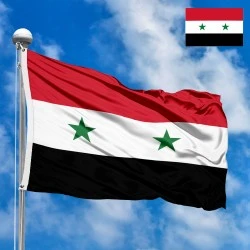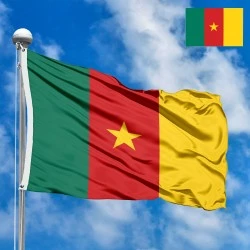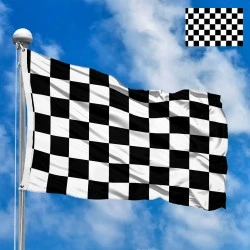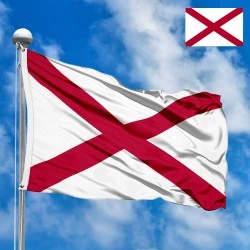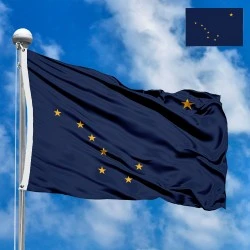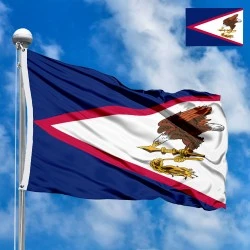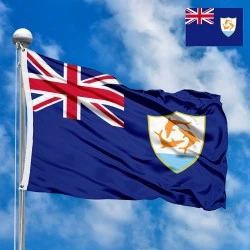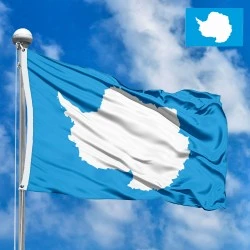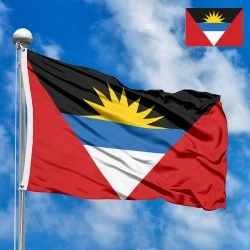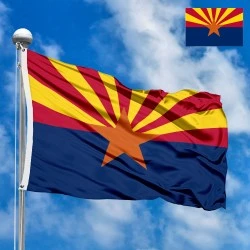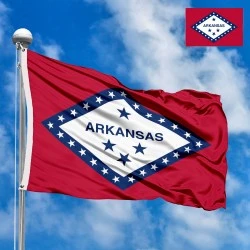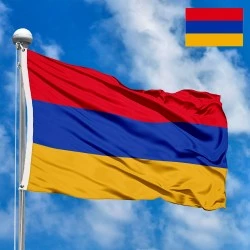Flag of Syria
- Flag Type: State
- Proportions (official): 2:3
- Official name: Syrian Arab Republic
- Local name: الجمهورية العربية السورية
- Sovereignty (year): YES (1946)
- Member of Organizations: UN, League of Arab States, Organization of Islamic Cooperation
- Country code, territory: SY, SYR, 760
- Capital: Damascus
- Large cities: Aleppo, Homs, Hama, Latakia
- Population: ~24,100,000 (2024, UN)
- Religions: Sunni Islam ~75%, Other Muslims ~13%, Christianity ~10%
- Area (km²): 185 180
- Highest point: Mount Hermon (2,814 m)
- Lowest point: Unnamed site near As-Safi (-200 m)
- Currency: Syrian pound (SYP, £S)
- Languages: Arabic
- Dialing code: +963
- National domain: .sy
Flag Information
General information
Demography and Culture
Economy and communications
- All Flags
- Flags of Countries by Continent
-
Flags of Organizations
- Flags of UN countries
- Flags of the European Union countries
- Flags of NATO countries
- Flags of the countries of the Organization of Islamic Cooperation
- Flags of the countries of the Organization of American States
- Flags of the Arab League countries
- Flags of the African Union countries
- Flags of the countries of the Union of South American Nations
- Flags of the Commonwealth of Nations
- Flags of the countries of the Secretariat of the Pacific Community
- Flags of the Nordic Council countries
- Flags of the Caribbean Community
- Flags of the countries of the Association of Southeast Asian Nations
- Flags of the East African Community
- Flags of the countries of the Organization of Turkic States
- LGBT Community Flags
- Historical Flags
- Ethnic Flags
- Flags of the USA (states)
Description
The "Independence Flag" of Syria is a powerful historical emblem, distinct from the current official flag. This green, white, and black tricolor, featuring three red stars on its central white stripe, represents a significant period in Syria's journey towards independence and its subsequent political struggles. For many, especially within the Syrian opposition and diaspora, this flag symbolizes the original aspirations for freedom, democracy, and a break from authoritarian rule.
Dimensions, Colors, and Arrangement of Elements: The "Independence Flag" adheres to the classic Pan-Arab color scheme but with a unique arrangement and specific symbolism.
-
The flag typically has an aspect ratio of 2:3, with its width being one and a half times its height, creating a balanced rectangular form.
-
It is a horizontal tricolor, with three equally wide stripes:
-
Green (top stripe): The uppermost green stripe primarily symbolizes the Rashidun Caliphate (632-661 AD), the first caliphate in Islam, which marked the initial period of Islamic rule following the Prophet Muhammad. It also broadly represents prosperity, hope, and the fertile lands of Syria.
-
White (middle stripe): The central white stripe symbolizes the Umayyad Caliphate (661-750 AD), a powerful Islamic dynasty that ruled from Damascus and significantly expanded the Arab Empire. It also represents peace, purity, and optimism. Within this white stripe are the defining elements: three red five-pointed stars.
-
The red color of the stars symbolizes sacrifice, courage, and the blood shed by martyrs for the nation's independence and sovereignty. It connects to the broader theme of the Arab Revolt.
-
The three stars have had evolving interpretations. Originally, they were said to represent the three districts that formed Syria at the time of its adoption (Damascus, Aleppo, and Deir ez-Zor). Later, during Syria's independent period, they were sometimes interpreted as representing the three main religious communities within Syria: Sunnis, Alawites, and Druze, signifying unity amongst them. For the modern opposition, they collectively represent the three goals of the Syrian Revolution: freedom, unity, and justice.
-
-
Black (bottom stripe): The lowest black stripe represents the Abbasid Caliphate (750-1258 AD), which succeeded the Umayyads. It also broadly symbolizes oppression and the dark periods of foreign rule that Syria endured throughout its history, particularly under the Ottoman Empire.
-
History of the Flag's Creation and Adoption: The "Independence Flag" has a rich and poignant history, intrinsically linked to Syria's struggle for self-determination.
-
Origins in the Arab Revolt (1916-1918): The flag's colors derive from the flag of the Arab Revolt against the Ottoman Empire, which was predominantly black, white, and green with a red triangle. This revolt aimed to establish an independent Arab state.
-
Adoption under French Mandate (1932): Although Syria was under French Mandate control after World War I, nationalist sentiment for independence grew. In 1932, under a treaty with France, this specific green-white-black flag with three red stars was officially adopted by the newly formed Syrian Republic. It was a compromise, allowing for a distinct Syrian symbol while still under French oversight.
-
Flag of Independent Syria (1946-1958): When Syria gained full independence from France in 1946, this flag proudly became the national emblem of the sovereign Syrian Republic. It flew during Syria's early years of independence, representing the hopes and aspirations of the newly formed state.
-
Superseded by UAR Flag (1958-1961): In 1958, Syria united with Egypt to form the United Arab Republic (UAR). The "Independence Flag" was replaced by the UAR flag, a red-white-black tricolor with two green stars (which is similar to the current official Syrian flag). This move reflected the pan-Arab aspirations of the time.
-
Brief Return (1961-1963): After Syria seceded from the UAR in 1961, the "Independence Flag" was briefly reinstated, signaling a return to Syria's distinct national identity.
-
Overthrown by Ba'athist Coup (1963 Onwards): However, this return was short-lived. In 1963, the Ba'ath Party seized power in a coup. The Ba'athists, committed to a different vision of Arab unity, once again replaced the "Independence Flag." They first adopted a red-white-black flag with three green stars, and later, in 1980, settled on the current official flag with two green stars, harkening back to the UAR design.
-
Symbol of Opposition (2011 Onwards): With the outbreak of the Syrian Civil War in 2011, the "Independence Flag" was spontaneously adopted by the Syrian opposition and revolutionary movements. It became the primary symbol of their rejection of the Ba'athist regime and their aspirations for a democratic, free Syria, reclaiming its historical association with independence and national sovereignty.
Symbolism and Meaning for Residents: The "Independence Flag" holds profound and often contrasting meanings for different segments of the Syrian population, reflecting the deep political chasm within the country.
-
For the Syrian Opposition and Revolutionaries:
-
Symbol of Freedom and Democracy: Above all, this flag is the paramount symbol of the Syrian Revolution and the aspiration for freedom, justice, and a democratic future. It represents a break from the current authoritarian regime.
-
Legitimate Syrian Identity: For them, it embodies the true and legitimate Syrian national identity, untainted by the Ba'athist regime's rule. They see it as the flag of a sovereign and free Syria, reminiscent of the pre-Ba'athist independent state.
-
Continuity with Pre-Ba'athist Syria: It signifies continuity with Syria's independent past before the Ba'ath Party came to power, representing a return to perceived national dignity and sovereignty.
-
Unity Against Tyranny: The three stars, for the opposition, often symbolize the unity of Syrians from all backgrounds in their fight against the regime, embodying the revolutionary slogan "Freedom, Unity, Justice."
-
Remembrance of Martyrs: The red stars specifically evoke the blood and sacrifice of those who died in the struggle against the current government.
-
-
For Supporters of the Current Syrian Government:
-
Symbol of Rebellion/Division: For those who support the current Syrian government, this flag is seen as a symbol of rebellion, division, and an attempt to dismantle the Syrian state. They associate it with foreign-backed opposition groups and often view it as a symbol of terrorism or sedition.
-
Rejection of its Legitimacy: They vehemently reject its legitimacy as a national symbol, adhering exclusively to the current red-white-black flag with two green stars.
-
-
For Syrian Diaspora:
-
The "Independence Flag" is widely adopted by Syrian diaspora communities around the world who oppose the current regime. It serves as a visual identifier of their cause, a symbol of their homeland's true identity, and a rallying point for activism and advocacy for a free Syria.
-
Interesting Facts: The "Independence Flag" has several compelling facts that highlight its enduring significance in Syrian history and contemporary politics.
-
The "Other Flag" of Syria: It is arguably the most recognized "other flag" of a nation, used in direct contrast to the official government flag. This stark visual dichotomy clearly communicates political alignment.
-
Historical Legitimacy: Unlike the current official flag, which has strong ties to pan-Arabist political movements and specific regimes, the "Independence Flag" predates the Ba'ath Party's rule and was the flag of the original independent Syrian Republic. This gives it a strong claim to historical legitimacy for many.
-
Widespread Use by Opposition: During the Syrian Civil War, this flag was seen extensively in areas controlled by the opposition, at protests worldwide, and in media coverage, making it universally recognized as the symbol of the Syrian Revolution.
-
Evolving Star Meanings: The interpretation of the three red stars demonstrates how national symbols can adapt to new political contexts while retaining core values. From administrative divisions to religious communities, and finally to revolutionary ideals, the stars' meaning has evolved with Syria's journey.
-
Connects to Arab Nationalism's Roots: While the current flag (two green stars) also claims pan-Arab roots, the "Independence Flag" with its green-white-black arrangement and red stars, directly links back to the original Arab Revolt, emphasizing a historical lineage that predates specific party ideologies.
-
Emotional Resonance: For many Syrians, particularly those who have experienced displacement or loss due to the conflict, this flag carries a profound emotional weight, representing a lost homeland and the hope for its eventual restoration to freedom.
-
Banned by the Syrian Government: The display of the "Independence Flag" within areas controlled by the Syrian government is strictly prohibited and can lead to severe repercussions, further cementing its status as a symbol of dissent.
In the demonstration images, full-size flags are shown with proportions of 2:3, and hand-held flags with proportions of 1:2.
Donation
Download
Completely free for commercial and non-commercial use (public domain).
You can freely use them in your news magazines, websites, software, mobile applications.
We appreciate a backlink to https://flagssite.com
Raster files - Flag of Syria (PNG, JPG)
 Waving flag
Waving flag
- PNG format (transparent background), 72dpi, dimensions in Pixels (px), aspect ratio 3:4.
- 15х20 px
- 30х40 px
- 60х80 px
- 120x160 px
- 240x320 px
 Sizes:
Sizes:
"v15" - image size (by height); if necessary, replace with available: v15, v30, v60, v120, v240.
!!! For resizing, use the Latin (eng) keyboard layout.
<img src="https://flagssite.com/flags/v15/20358.png" alt="Flag of Syria">
 Round flag
Round flag
- PNG format (transparent background), 72dpi, dimensions in Pixels (px), aspect ratio 1:1.
"d15" - image size (diameter); if necessary, replace with available: d15, d30, d60, d120, d240.
!!! For resizing, use the Latin (eng) keyboard layout.
<img src="https://flagssite.com/flags/d15/20358.png" alt="Flag of Syria">
 Rectangular flag 2:3
Rectangular flag 2:3
- JPG format, 72dpi, dimensions in Pixels (px), aspect ratio 2:3.
"h30" - image size (by height); if necessary, replace with available: h15, h30, h60, h120, h240, h360, h480.
!!! For resizing, use the Latin (eng) keyboard layout.
<img src="https://flagssite.com/flags/h30/20358.jpg" alt="Flag of Syria">

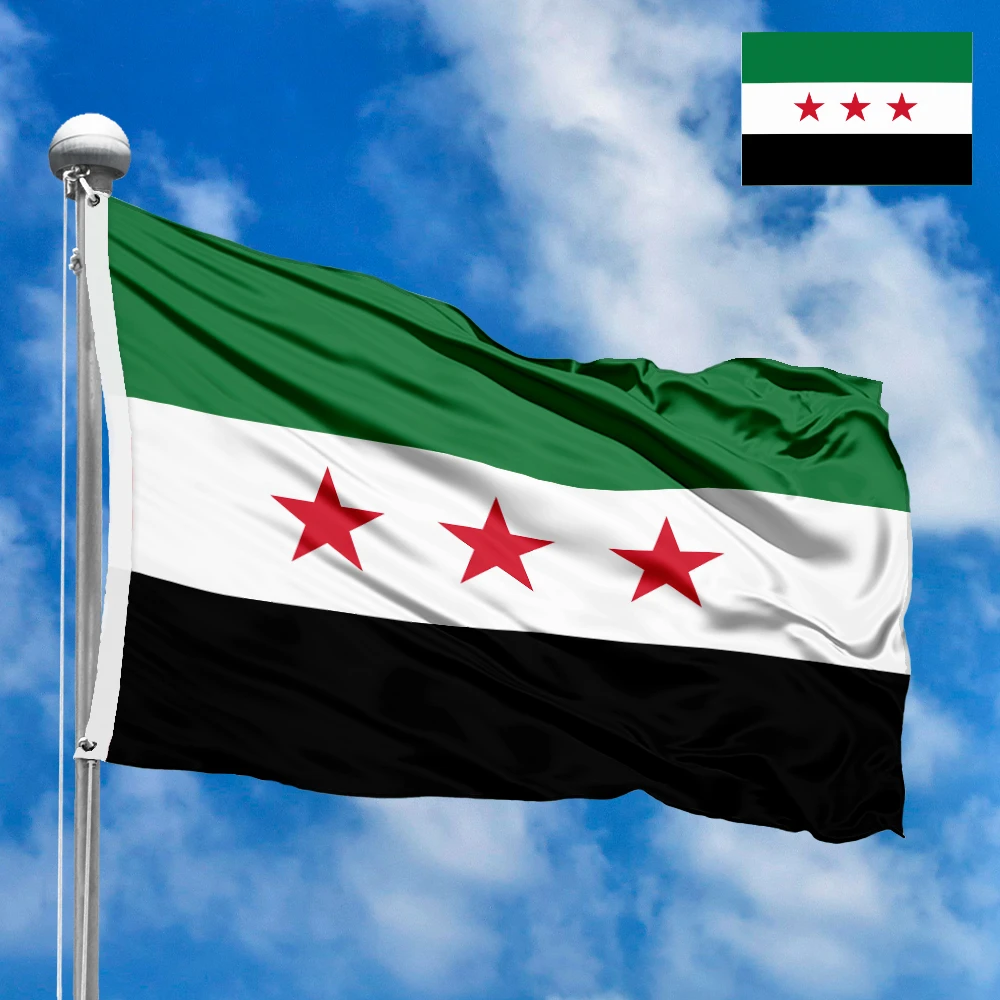
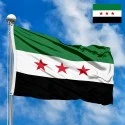
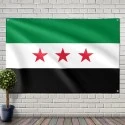
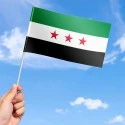
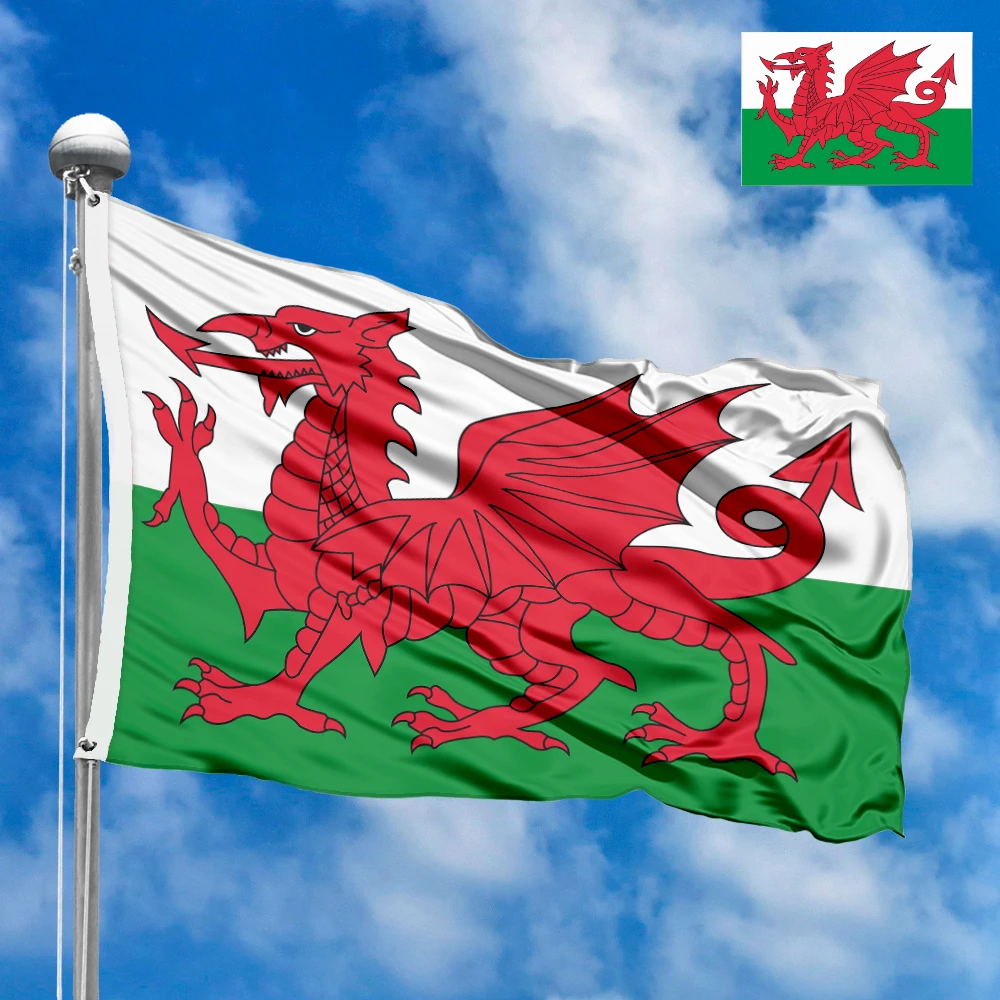
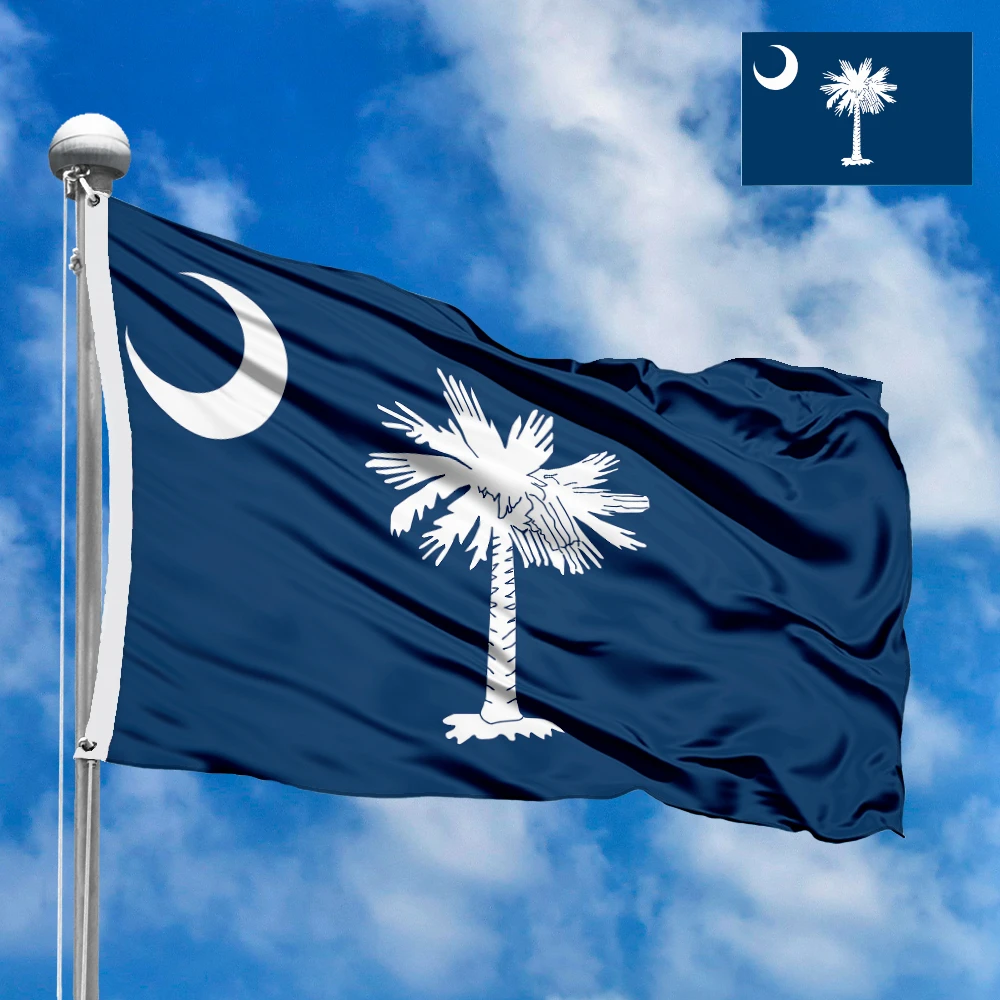

 Sizes:
Sizes:
 Sizes:
Sizes:
